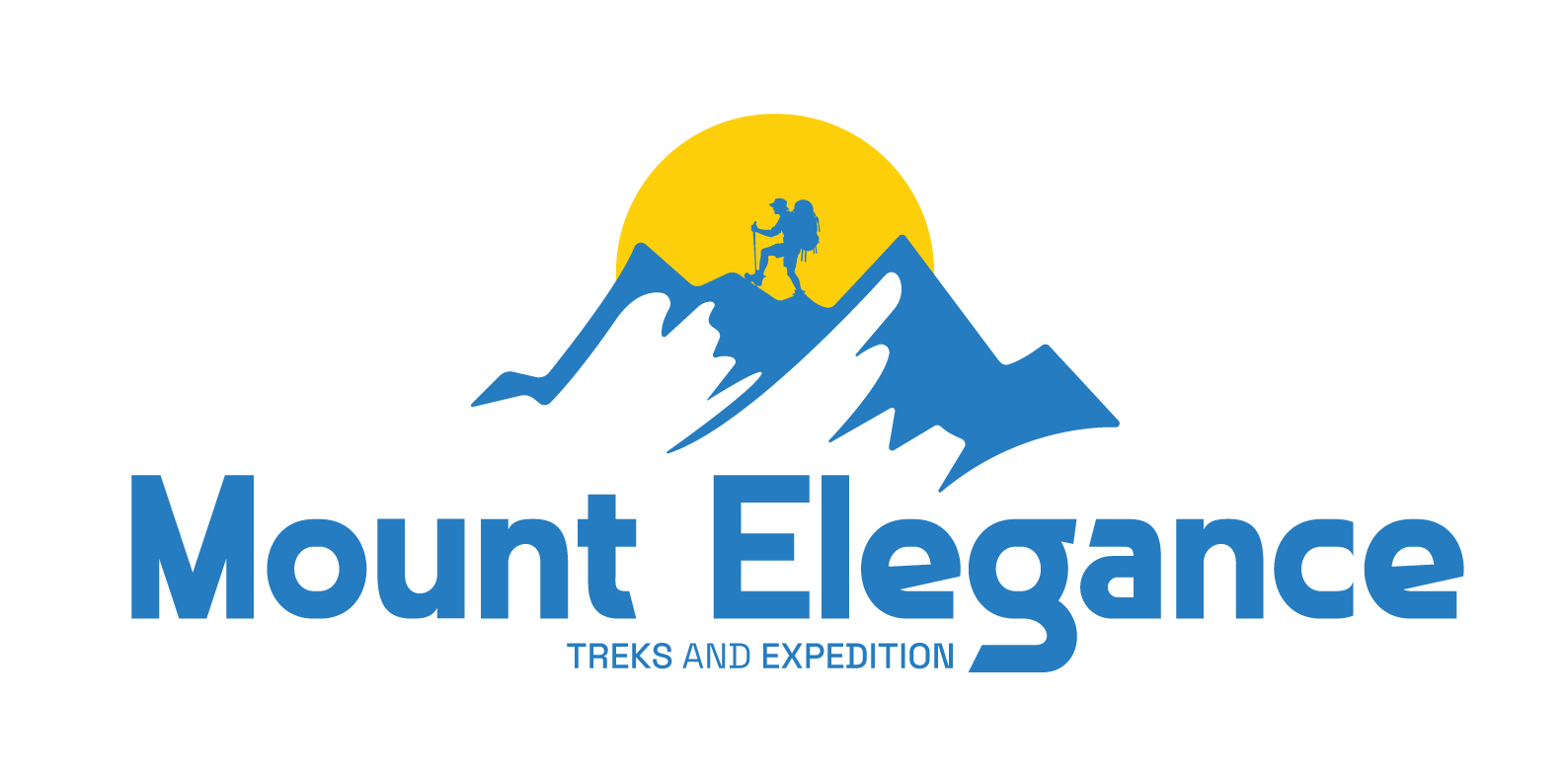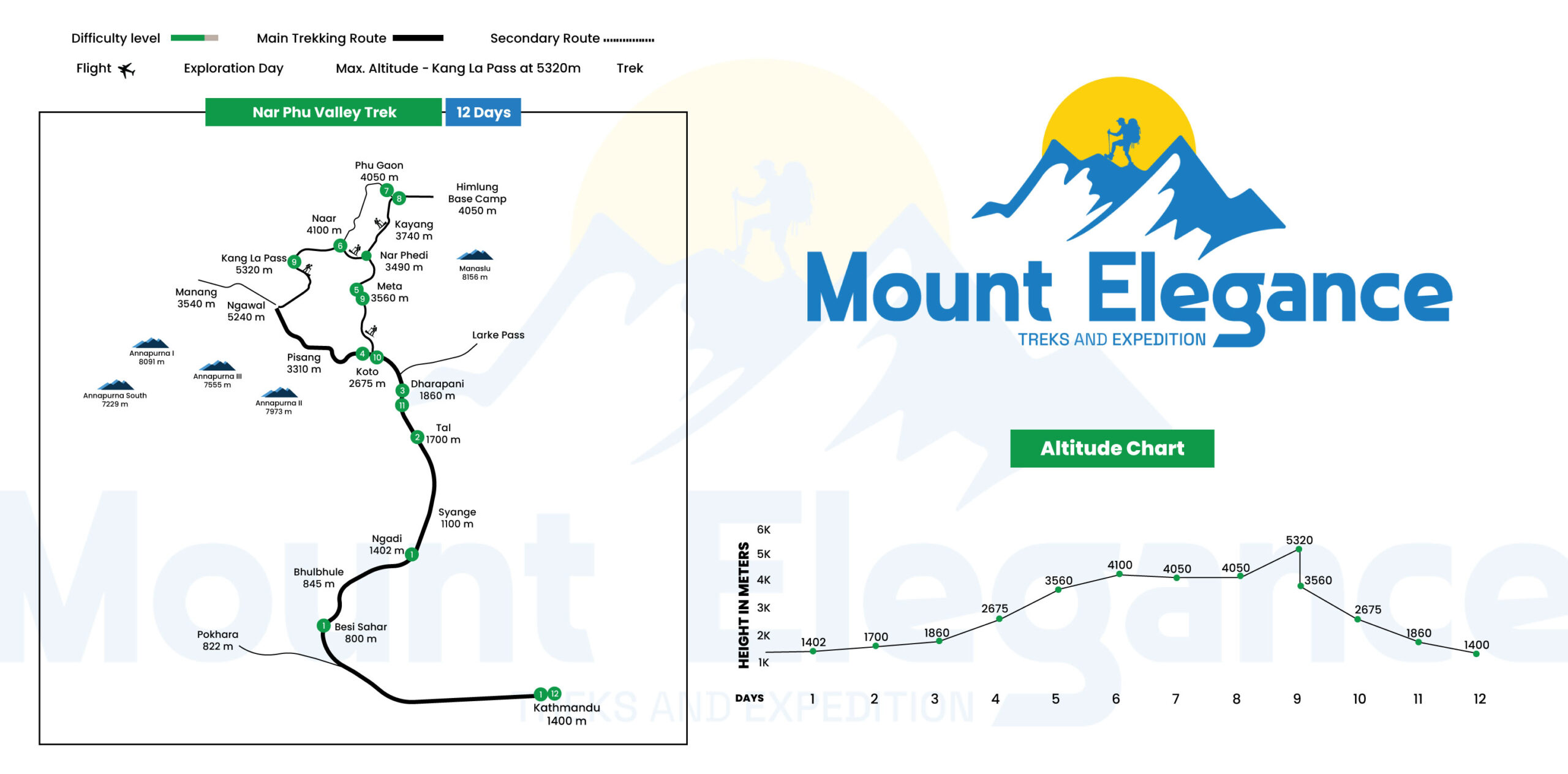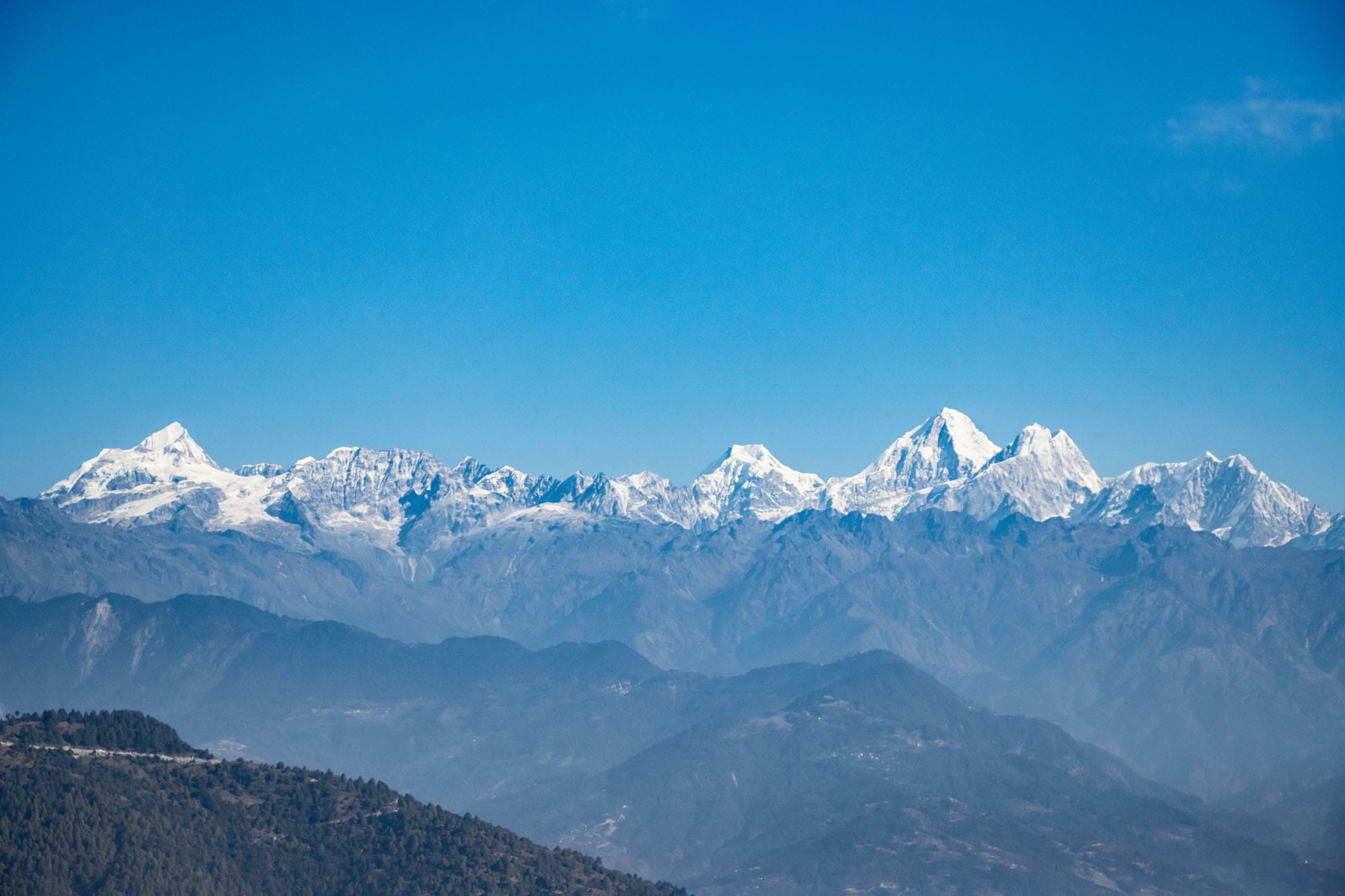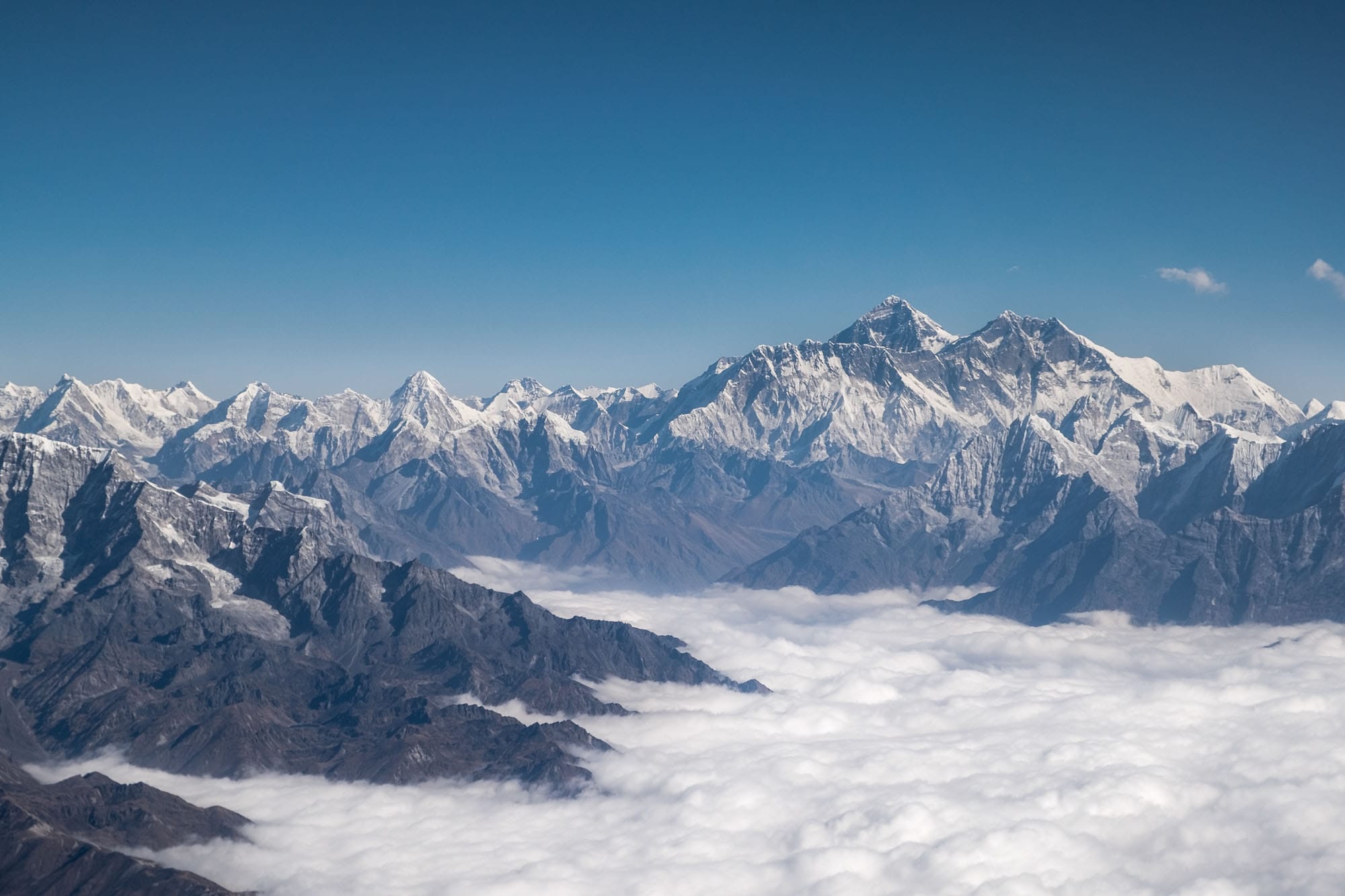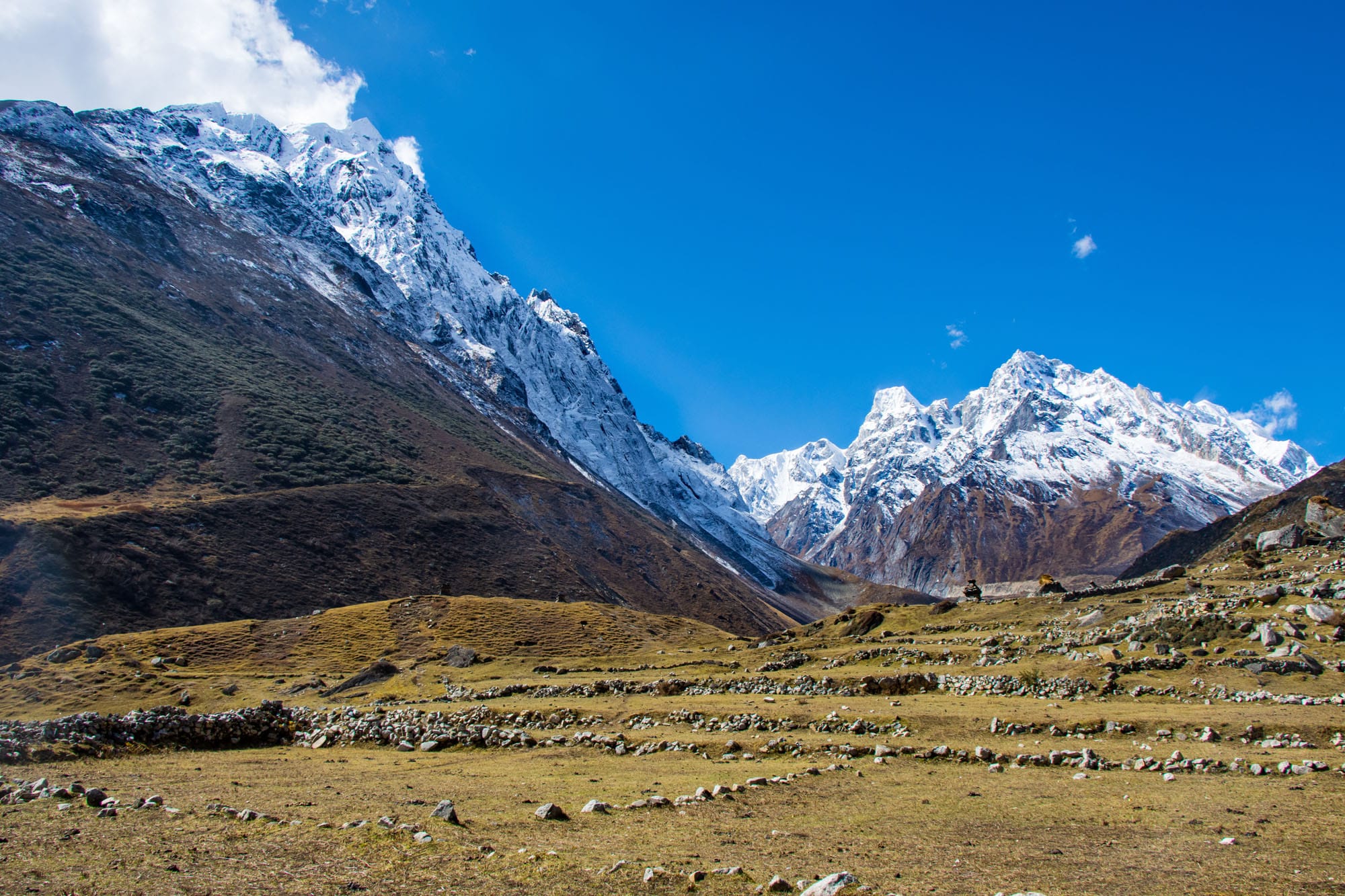Nar Phu Valley Trek – 12D
Best Season
Highest Altitude
Trip Overview
Nar Phu Valley Trek – 12 days offers an extraordinary journey into some of the most untouched and culturally rich Himalayan landscapes. This Nar Phu Valley Trek 12-day trek takes you through ancient villages, high mountain passes, and dramatic valleys rarely visited by travelers, giving you a genuine glimpse into traditional Tibetan-influenced cultures and lifestyles.
The trail weaves through rugged terrains, spectacular mountain vistas, and serene alpine lakes, offering breathtaking views of towering peaks such as Annapurna II, Gangapurna, and Manaslu. Along the way, you’ll encounter warm and welcoming local communities, ancient monasteries, and unique wildlife that make this trek a true adventure off the beaten path.
Trip Highlights of Nar Phu Valley Trek – 12 days
- Explore the pristine and remote Nar and Phu Valleys, known for their traditional Tibetan culture and ancient monasteries.
- Traverse high mountain passes like Kang La Pass (5,320 m), offering panoramic views of Annapurna II, Manaslu, and Tilicho Peak.
- Visit the ancient walled village of Phu, one of Nepal’s best-preserved Tibetan-influenced settlements.
- Experience stunning alpine landscapes, crystal-clear rivers, and unique Himalayan flora and fauna.
- Enjoy close encounters with local communities and immerse yourself in authentic Tibetan Buddhist traditions.
- Witness spectacular sunrise and sunset views over towering Himalayan peaks and serene valleys.
- Opportunity to spot elusive wildlife such as snow leopards, blue sheep, and Himalayan marmots.
Essential Items:
- Base Layers: Thermal top and bottom
- Insulation: Fleece jacket and down jacket
- Outer Layer: Waterproof jacket and pants
- Trekking Clothes: Some pairs of trekking pants, quick-dry shirts
- Footwear: Trekking boots, camp shoes/sandals
- Headwear: Sun hat, warm hat, neck gaiter
- Hand-wear: Lightweight gloves, insulated gloves
Accessories: Sunglasses, sunscreen, lip balm , headlamp with extra batteries , trekking poles ,50-60L backpack + daypack
Personal Items: Hygiene essentials (toothbrush, toothpaste, wet wipes), Quick-dry towel ,Water bottle or hydration system (2L capacity) ,Snacks (energy bars, nuts)
Medical Kit: Personal medications, basic first aid, altitude sickness pills
Documents: Passport, trekking permits, travel insurance
Optional: Camera, power bank, Lightweight sleeping bag
Itinerary
Drive Duration: 7–8 hours
Meals: Breakfast, Lunch, Dinner
Highest Altitude: 1,400m
Your Nar Phu Valley adventure begins with a scenic drive from Kathmandu to Besisahar, passing rivers, terraced fields, and charming roadside villages along the Prithvi Highway. The journey offers the first glimpse of Nepal’s diverse landscapes, from urban centers to lush countryside.
From Besisahar, the road continues to Ngadi, a beautiful riverside village. Surrounded by green hills and views of distant peaks, Ngadi provides a peaceful start to your trekking journey. This stopover allows you to rest before the trail gradually climbs higher into the Himalayas.
Trek Duration: 6–7 hours
Meals: Breakfast, Lunch, Dinner
Highest Altitude: 1,700m
The trek begins with a gentle climb through subtropical forests, waterfalls, and terraced farmland. Suspension bridges connect villages along the Marsyangdi River, offering stunning views of rolling hills and traditional Gurung settlements.
Reaching Tal, a picturesque village on the banks of the river, feels like stepping into a hidden valley. The flat, wide terrain contrasts with the deep gorges passed earlier, and prayer flags welcome trekkers into this serene Himalayan settlement.
Trek Duration: 5–6 hours
Meals: Breakfast, Lunch, Dinner
Highest Altitude: 1,860m
The trail continues along the Marsyangdi River, gradually ascending through pine forests and rocky terrain. Waterfalls cascade from cliffs, and small hamlets along the way showcase traditional stone houses and terraced agriculture.
Dharapani, where the Annapurna Circuit Trek and Nar Phu Valley Trek routes intersect, is a culturally rich stop. Tibetan prayer flags, gompas, and local teahouses reflect the region’s Buddhist heritage. This village is also a key checkpoint before heading deeper into the restricted valleys.
Trek Duration: 5–6 hours
Meals: Breakfast, Lunch, Dinner
Highest Altitude: 2,675m
The trail climbs steadily through dense pine and oak forests, offering occasional views of snowy peaks in the Annapurna range. Passing through Bagarchhap and other small villages, trekkers encounter both Gurung and Tibetan cultures blending harmoniously.
Koto, a charming stone-built village, serves as the official gateway to Nar Phu Valley. Here, special trekking permits are checked, and trekkers prepare for the upcoming remote and culturally unique Himalayan valleys.
Trek Duration: 7–8 hours
Meals: Breakfast, Lunch, Dinner
Highest Altitude: 3,560m
Today’s trail follows the Nar Khola River, winding through dense pine forests, suspension bridges, and narrow gorges. The path is adventurous, with rocky terrain and stunning natural scenery leading toward higher elevations.
Arriving in Meta, trekkers are welcomed with wide-open landscapes and spectacular mountain views. The Tibetan-style settlements here give the first taste of the remote culture of Nar Phu Valley, where time seems to stand still amidst the Himalayas.
Trek Duration: 6–7 hours
Meals: Breakfast, Lunch, Dinner
Highest Altitude: 4,100m
The trail gradually ascends through arid landscapes, past ancient chortens and stone walls. Unlike the greener lower valleys, this area reflects the high-altitude desert terrain of the Tibetan plateau.
Naar village is a cultural gem, home to traditional Tibetan-style houses and centuries-old monasteries. The villagers maintain age-old practices of farming and herding, offering trekkers an authentic cultural immersion far from modern life.
Trek Duration: 6–7 hours
Meals: Breakfast, Lunch, Dinner
Highest Altitude: 4,100m
This day takes you across windswept highlands, crossing ancient bridges and exploring secluded valleys. Mani walls and Buddhist shrines mark the path, showing the spiritual significance of this hidden valley.
Reaching Phu Gaon, one of the most remote villages in Nepal, feels like entering another world. Surrounded by towering peaks and stone-built houses, Phu preserves its Tibetan culture, gompas, and lifestyle untouched by modernity.
Meals: Breakfast, Lunch, Dinner
Highest Altitude: 4,050m
Today is dedicated to exploring the hidden treasures of Phu Valley. Trekkers can visit Tashi Lakhang Monastery, considered one of the last monasteries built by the legendary Lama Karma Sonam Rinpoche. The cultural richness of Phu is matched by stunning Himalayan panoramas.
Optional hikes include visiting Himlung Base Camp (4,050m), offering breathtaking views of Himlung Himal and surrounding peaks. This acclimatization day also provides time to engage with local villagers and learn about their centuries-old traditions.
Trek Duration: ~8–10 hours
Meals: B/L/D
Highest Altitude: 5,320 m
Today is the most challenging and rewarding day as you ascend to Kang La Pass, standing at 5,320 meters. The climb demands physical stamina and mental focus but rewards you with breathtaking 360-degree views of some of Nepal’s tallest mountains.
After soaking in the scenery, you’ll descend back to Meta, where you can rest and reflect on this unforgettable experience.
Trek Duration: ~5–6 hours
Meals: B/L/D
Highest Altitude: 2,700 m
Retrace your steps as you descend through varied Himalayan landscapes back to Koto. The descent is gentler, allowing you to enjoy the flora and fauna along the way. Reconnect with the local culture and enjoy warm hospitality.
Trek Duration: ~5 hours
Meals: B/L/D
Highest Altitude: 1,860 m
Continue descending through peaceful forests and alongside rivers to Dharapani. The trail’s gentle pace offers time for reflection and appreciation of the natural beauty around you. Dharapani’s lively market atmosphere contrasts nicely with the quiet valleys you’ve traversed.
Trek Duration: ~5–6 hours trek + drive (private vehicle) - $180
Meals: B/L/D
Highest Altitude: 820 m
Complete your trek with a final hike to Besisahar, then enjoy a scenic drive back to Kathmandu. This journey offers a final opportunity to take in Nepal’s diverse landscapes and cultures. Celebrate your achievement with memories of remote valleys, majestic mountains, and unique cultural experiences.A farewell dinner with traditional Nepali cuisine is a great way to celebrate the successful completion of your trek which is hosted by mount elegance team.
Book Now
Send an Inquiry
Got A Question?

Mr. Shishir Dhakal
Price Inclusion
- Drive from Kathmandu- Ngadi. After the trek, Dharapani - Kathmandu by bus/jeep.
- Accommodation in teahouses during the trek.
- All meals (breakfast, lunch, and dinner) during the trek.
- Experienced English-speaking trekking guide.
- Restricted Area Permit (RAP) for Nar & Phu Valleys
- Annapurna Conservation Area Permit (ACAP) and TIMS card.
- Seasonal fresh fruit as dessert every evening after dinner.
- Mount Elegance free Tshirt and Route map.
- Complimentary first aid box (Guide will carry during trekking).
- Oximeter to measure the Oxygen (For awareness of the high altitude sickness).
- Duffel bag and sleeping bag for trekking (Should be returned after trek completion).
- One porter for two trekkers.
- Farewell dinner at the end of the trek.
Price Exclusion
- International airfare to and from Nepal
- Visa fees for Nepal entry
- Travel and personal insurance (mandatory for trekking)
- Meals and accommodation in Kathmandu before and after the trek
- Personal expenses such as drinks, snacks, laundry, and phone calls
- Tips and gratuities for guides, porters, and drivers
- Equipment rental (e.g., sleeping bags, down jackets, trekking poles) unless specified
Additional Information
Trip Map
Meals and Accommodation
During the Nar Phu Valley Trek, all meals are thoughtfully provided to keep you energized throughout your journey. Breakfasts typically include options like porridge, eggs, toast, or traditional Nepali dishes such as dal bhat. For lunch and dinner, you can expect hearty meals featuring noodles, rice, vegetable curries, and occasionally meat dishes like chicken or yak stew. Hot beverages such as tea, coffee, and lemon drinks are commonly served, and snacks like biscuits and chocolate are usually available for purchase along the trail. Most meals are freshly prepared at teahouses and lodges, with options to accommodate special dietary needs upon request.
Accommodation is mainly in cozy teahouses and mountain lodges that offer basic but comfortable facilities suitable for trekkers. These lodgings typically provide simple rooms with beds, blankets, and communal dining areas where you can relax and connect with fellow travelers. While some lodges, especially in larger villages like Koto, Nar, and Phu, may have attached bathrooms and hot showers, facilities in more remote areas tend to be rustic, adding to the authentic trekking experience. Electricity for charging devices is generally available in the evenings, but heating is limited, so bringing warm clothing and a good sleeping bag is advisable for comfort.
Best Season for Trek
The best seasons for trekking the Nar Phu Valley are spring (March to May) and autumn (late September to November). During these months, the weather is generally stable with clear skies, moderate temperatures, and excellent visibility of the surrounding Himalayan peaks. Spring brings blooming rhododendrons and vibrant alpine flowers along the trail, while autumn offers crisp air and stunning sunsets, making both seasons ideal for breathtaking scenery and comfortable trekking conditions.
Equipment Checklist
- Layered clothing: waterproof jacket, down jacket, thermal base layers, fleece mid-layer
- Trekking pants and waterproof pants
- Warm accessories: gloves, hats (warm and sun), trekking socks
- Well-broken-in trekking boots and camp shoes/sandals
- Daypack (20-30L) and sleeping bag (rated to -10°C/14°F)
- Trekking poles and headlamp with extra batteries
- Sunglasses with UV protection
- Water bottles (2L+) and water purification method
Frequently Asked Questions(FAQs)
Can I use my mobile phone in Nepal?
Yes, you can use your mobile phone in Nepal, but you may need to take a few precautions. Nepal has two primary mobile networks: Nepal Telecom (NTC) and Ncell. Both networks offer good coverage in urban areas, while coverage can be limited in rural areas. If you have an international roaming plan, you can use your phone to make calls, send texts, and access the internet. However, international roaming rates can be high, so it’s a good idea to check with your provider before your trip. Alternatively, you can purchase a local SIM card or rent a portable Wi-Fi hotspot from a local provider, which can be a cost-effective and convenient option. At Mount Elegance Treks and Expedition, we can provide guidance on the best options for staying connected during your time in Nepal.
Is Nepal safe for female travelers?
Nepal is a welcoming and inclusive country for female travelers, and with some basic precautions, women can have a safe and enjoyable trip. Our team at Mount Elegance Treks and Expedition wants to provide you with a clear understanding of what to expect and how to stay safe.
General Safety:
Low Crime Rate: Nepal has a relatively low crime rate, and most areas are considered safe for female travelers.
Respectful Culture: Nepalese culture is generally respectful towards women, and you will often be treated with kindness and hospitality.
Supportive Community: The trekking community in Nepal is supportive and inclusive, with many female guides and porters leading treks and expeditions.
Precautions to Take:
Dress Modestly: Dress modestly and respectfully, covering your shoulders and knees when visiting temples or rural areas.
Be Aware of Your Surroundings: Be mindful of your surroundings, especially in crowded areas or at night.
Avoid Solo Travel at Night: Avoid traveling alone at night, especially in rural areas.
Use Reputable Transportation: Use reputable transportation, such as taxis or buses, and agree on the fare before you start your journey.
Stay with a Group: When trekking, stay with a group and follow your guide’s instructions.
Tips for Female Trekkers:
Pack Comfortable Clothing: Pack comfortable clothing that allows for freedom of movement.
Bring a Portable Charger: Bring a portable charger to keep your phone charged, especially in rural areas.
Stay Hydrated: Stay hydrated by drinking plenty of water, especially at high altitudes.
Respect Local Customs: Respect local customs and traditions, especially when visiting temples or rural areas.
Staying Safe with Mount Elegance Treks and Expedition:
Female Guides and Porters: We employ female guides and porters who are experienced and trained to lead treks and expeditions.
24-hour Emergency Contact: We have a 24-hour emergency contact system in place to ensure that you receive prompt assistance in case of an emergency.
* Local Knowledge: Our team has extensive knowledge of the country and can provide you with valuable insights and recommendations to stay safe.
Our team at Mount Elegance Treks and Expedition is committed to providing you with a safe and enjoyable travel experience in Nepal. If you have any concerns about safety or your well-being, please don’t hesitate to ask.
What emergency numbers should I know in Nepal?
In case of an emergency, knowing the right numbers to call can be a lifesaver. Our team at Mount Elegance Treks and Expedition wants to ensure that you have the necessary information to stay safe and receive prompt assistance.
Important Emergency Numbers:
Nepal Police: 100
- for reporting crimes, accidents, or other emergencies
Nepal Ambulance: 101 – for emergency medical assistance
Fire Department: 102 – for reporting fires or other emergency situations
Tourist Police: 4221401 – for assistance and guidance for tourists
Mountain Rescue Operation Team (MRO): 4221401 – for emergency rescue and assistance in mountainous regions
Nepal Red Cross Society: 4241901 – for humanitarian assistance and emergency responseAdditional Tips:
Carry a Phone with a Nepalese SIM Card: Carry a phone with a Nepalese SIM card to ensure you can make calls in case of an emergency.
Keep Emergency Numbers Handy: Keep the emergency numbers handy, either by saving them in your phone or by writing them down and carrying them with you.
Inform Your Embassy or Consulate: Inform your embassy or consulate of your travel plans and register with them to receive important safety and security updates.Staying Safe with Mount Elegance Treks and Expedition:
Guided Tours: Our guides are experienced and trained to handle emergencies and provide assistance when needed.
24-hour Emergency Contact: We have a 24-hour emergency contact system in place to ensure that you receive prompt assistance in case of an emergency.
Local Knowledge: Our team has extensive knowledge of the country and can provide you with valuable insights and recommendations to stay safe.Our team at Mount Elegance Treks and Expedition is committed to providing you with a safe and enjoyable travel experience in Nepal. If you have any concerns about emergency numbers or your safety, please don’t hesitate to ask.
How safe is Kathmandu at night?
Kathmandu is generally a safe city at night, but as with any major city, it’s essential to take some precautions to ensure your safety. Our team at Mount Elegance Treks and Expedition wants to provide you with a clear understanding of the city’s safety at night.
General Safety:
Crime Rates: Kathmandu has a relatively low crime rate, and most areas are considered safe, even at night.
Police Presence: The Nepalese police force has a visible presence in the city, and patrols are frequent, especially in popular tourist areas.
Tourist-Friendly Areas: Areas like Thamel, Boudhanath, and Pashupatinath are well-lit and bustling with people, making them safe and enjoyable at night.
Precautions to Take:
Be Aware of Your Surroundings: As with any city, be mindful of your surroundings and keep an eye on your belongings, especially in crowded areas.
Avoid Walking Alone: While Kathmandu is generally safe, it’s still a good idea to avoid walking alone in dimly lit or isolated areas.
Use Reliable Transportation: Use reputable taxis or ride-sharing services, and agree on the fare before you start your journey.
Respect Local Customs: Dress modestly and respect local customs, especially when visiting temples or other cultural sites.
Safe Areas to Visit at Night:
Thamel: This popular tourist area is known for its lively nightlife, with many restaurants, bars, and clubs.
Boudhanath: This bustling neighborhood is home to many restaurants, cafes, and shops, and is a great place to experience the city’s nightlife.
Pashupatinath: This holy temple is a popular spot for evening worship and is generally safe, even at night.
Staying Safe with Mount Elegance Treks and Expedition:
Guided Tours: We offer guided tours and excursions that can help you navigate the city safely and efficiently.
Local Knowledge: Our team has extensive knowledge of the city and can provide you with valuable insights and recommendations.
* Emergency Assistance: In case of an emergency, we have a 24-hour emergency contact system in place to ensure your safety.
Our team at Mount Elegance Treks and Expedition is committed to providing you with a safe and enjoyable travel experience in Kathmandu. If you have any concerns about safety at night, please don’t hesitate to ask.
Are there pharmacies in trekking regions?
While there are some pharmacies and medical facilities in trekking regions, the availability of medications and medical supplies can be limited. Our team at Mount Elegance Treks and Expedition recommends that you pack essential medications and supplies before your trek, and to be prepared for any medical emergencies that may arise.
Pharmacy Availability:
Kathmandu and Pokhara: In these major cities, you can find a wide range of pharmacies and medical facilities that offer a variety of medications and supplies.
Trekking Regions: In trekking regions, pharmacies and medical facilities are limited, and may only carry basic medications and supplies.
Rural Areas: In rural areas, medical facilities and pharmacies may be non-existent, so it’s essential to be self-sufficient and prepared.
What to Expect:
Limited Medications: In trekking regions, you may not find all the medications you need, so it’s essential to pack essential medications and supplies.
Basic Medical Care: Medical facilities in trekking regions may only offer basic medical care, such as first aid and initial treatment.
Communication Challenges: Communication challenges may arise in remote areas, so it’s essential to have a reliable means of communication, such as a satellite phone or two-way radio.
Preparation is Key:
Pack Essential Medications: Pack essential medications and supplies, such as pain relievers, antibiotics, and antacids.
Bring a First Aid Kit: Bring a first aid kit with essentials, such as bandages, antiseptic wipes, and pain relievers.
Inform Your Guide or Leader: Inform your guide or leader about any medical conditions or concerns you may have.
What to Do in Case of a Medical Emergency:
Stay Calm: Stay calm and seek medical attention as soon as possible.
Contact Your Guide or Leader: Contact your guide or leader for assistance and guidance.
Seek Medical Attention: Seek medical attention at the nearest medical facility or hospital.
Our team at Mount Elegance Treks and Expedition is committed to providing you with a safe and healthy travel experience in Nepal. If you have any concerns about pharmacies or medical facilities in trekking regions, please don’t hesitate to ask.
What medications should I pack for Nepal?
When traveling to Nepal, it’s essential to pack medications that can help prevent and treat common health issues that may arise. Our team at Mount Elegance Treks and Expedition recommends that you consult with your doctor and pack the following medications:
Essential Medications:
Altitude Sickness Medication: Consider packing Diamox (acetazolamide) to help prevent altitude sickness.
Antibiotics: Pack antibiotics for common infections, such as travelers’ diarrhea or urinary tract infections.
Pain Relievers: Pack pain relievers, such as acetaminophen or ibuprofen, to help manage headaches, fever, and pain.
Anti-diarrheal Medication: Pack anti-diarrheal medication, such as loperamide, to help manage travelers’ diarrhea.
Malaria Prevention: If you’re traveling to malaria-prone areas, pack malaria prevention medication, such as mefloquine or doxycycline.
Personal Medications: Pack any personal medications, such as epinephrine injectors, inhalers, or insulin, and be sure to bring a copy of your prescription.
Additional Tips:
Prescription Medications: Make sure to pack prescription medications in their original packaging, with a copy of your prescription and a list of medications.
Over-the-Counter Medications: Pack over-the-counter medications, such as antacids, antihistamines, and cough medicine.
First Aid Kit: Consider packing a first aid kit with essentials, such as bandages, antiseptic wipes, and pain relievers.
Nepal-Specific Health Concerns:
Hepatitis A and Typhoid: Nepal has a risk of hepatitis A and typhoid, so consider packing vaccinations or medications to prevent these diseases.
Malaria: Malaria is present in some parts of Nepal, so take necessary precautions to prevent contraction.
What to Do in Case of a Medical Emergency:
Seek Medical Attention: If you experience a medical emergency, seek attention immediately at a nearby hospital or medical facility.
Contact Your Embassy: Contact your embassy or consulate for assistance and guidance.
Carry a Medical Emergency Contact: Carry a medical emergency contact, such as a doctor or hospital, with you at all times.
Our team at Mount Elegance Treks and Expedition is committed to providing you with a safe and healthy travel experience in Nepal. If you have any concerns about medications or your health, please don’t hesitate to ask.
What altitude sickness symptoms should I watch for?
Altitude sickness, also known as Acute Mountain Sickness (AMS), can be a concern for travelers to high-altitude destinations in Nepal. Our team at Mount Elegance Treks and Expedition wants to ensure that you’re aware of the symptoms to watch for and know what to do if you experience them.
Common Symptoms of Altitude Sickness:
Headache: A severe headache is one of the most common symptoms of altitude sickness.
Fatigue: Feeling weak, tired, or sluggish is a common symptom of altitude sickness.
Nausea and Vomiting: Some people may experience nausea and vomiting, especially after eating.
Dizziness and Lightheadedness: You may feel dizzy or lightheaded, especially when standing up or walking.
Shortness of Breath: You may experience shortness of breath or difficulty breathing, even at rest.
Coughing: Coughing up pink, frothy mucus is a sign of altitude sickness.
Loss of Appetite: You may lose your appetite or feel like eating is a chore.
Severe Symptoms to Watch For:
Confusion and Disorientation: If you experience confusion, disorientation, or difficulty speaking, seek medical attention immediately.
Seizures: If you experience seizures, seek medical attention right away.
Chest Pain: If you experience chest pain or difficulty breathing, seek medical attention immediately.
What to Do If You Experience Altitude Sickness Symptoms:
Descend to a Lower Elevation: If you experience symptoms, descend to a lower elevation as soon as possible.
Rest and Hydrate: Get plenty of rest and drink plenty of fluids to help your body adjust.
Seek Medical Attention: If your symptoms worsen or you experience severe symptoms, seek medical attention immediately.
Prevention is Key:
Ascend Gradually: Ascend to higher elevations gradually, allowing your body to adjust.
Stay Hydrated: Drink plenty of fluids to help your body adjust to the high altitude.
Get Enough Rest: Get plenty of rest and avoid overexerting yourself.
Our team at Mount Elegance Treks and Expedition is committed to providing you with a safe and healthy travel experience in Nepal. If you have any concerns about altitude sickness or your health, please don’t hesitate to ask.
What is the difference between a guide and a porter?
While both guides and porters play essential roles in supporting trekkers in Nepal, their responsibilities and duties differ. A porter is responsible for carrying your luggage and gear, allowing you to focus on enjoying the trek. Porters are hired to assist with the physical demands of carrying loads, and they typically carry 20-30 kilograms of luggage per day. On the other hand, a guide is trained to lead and assist trekkers with navigation, cultural insights, and emergency response. Guides are responsible for ensuring your safety, providing information about the route, and handling any unforeseen situations that may arise during the trek. At Mount Elegance Treks and Expedition, we offer both guide and porter services, and we carefully select and train our staff to ensure that you receive the best possible support and attention during your Nepal trek. By hiring a guide and porter, you can enjoy a hassle-free and unforgettable trekking experience.
What medications should I bring for trekking in Nepal?
While trekking in Nepal, it’s essential to be prepared with basic medications to treat common ailments such as altitude sickness, diarrhea, and headaches. We recommend bringing a personal first-aid kit with essentials like pain relievers, antacids, antihistamines, and motion sickness medication. Additionally, if you have any pre-existing medical conditions, be sure to bring necessary medications and inform your guide. It’s also a good idea to pack blister care, bandages, and any personal medications you may need. Our guides are also trained in basic first aid and can provide assistance if needed. At Mount Elegance Treks and Expedition, we encourage you to consult with your doctor before your trek to determine the best medications for your specific needs, and our guides will do their best to ensure your health and safety throughout your adventure.
How do I prevent altitude sickness while trekking in Nepal?
Preventing altitude sickness is a top priority for any trekker in Nepal. To minimize the risk, we recommend gradual altitude gain, allowing your body to acclimatize to higher elevations. Our experienced guides will monitor your health and adjust the itinerary accordingly, ensuring that you have sufficient rest and hydration days. Additionally, drinking plenty of water, eating nutritious food, and avoiding strenuous activity in the initial stages of your trek can help your body adjust to the higher altitude. We also recommend ascend no more than 500-700 meters in a day and staying at least one night at the same elevation to allow for acclimatization. At Mount Elegance Treks and Expedition, we take the health and safety of our clients seriously, and our guides are trained to identify and respond to any signs of altitude sickness, so you can trek with confidence and enjoy the breathtaking scenery of Nepal’s Himalayas.
Where can I rent trekking equipment in Kathmandu?
Kathmandu offers a wide range of shops and outlets where you can rent trekking equipment, including hiking boots, trekking poles, sleeping bags, and jackets. Some of the most reputable rental shops include Kathmandu Trekking Stores, Himalayan Adventure Rentals, and Nepal Trekking Store. These shops offer high-quality equipment at reasonable prices, and many also provide rental guidance and advice to ensure you get the right gear for your trek. At Mount Elegance Treks and Expedition, we can provide you with a list of recommended rental shops and help you navigate the process, so you can focus on preparing for your adventure. Our team is also happy to assist with gear fitting and ensure you’re properly equipped for a safe and enjoyable trek.
How do I prepare physically for high-altitude trekking?
Preparing physically for high-altitude trekking in Nepal is crucial to ensure a safe and enjoyable journey. To acclimatize, start training at least 2-3 months prior to your trek with regular cardiovascular exercises such as jogging, cycling, or swimming for 30 minutes, 3-4 times a week. Incorporate strength training to build endurance, and include hill sprints or stair climbing to simulate high-altitude walking. Also, focus on building lung capacity through high-intensity interval training. Additionally, incorporate altitude simulation exercises, such as spending a night at a higher elevation (above 2,500m) to reduce the risk of altitude sickness. At Mount Elegance Treks and Expedition, we also provide personalized trekking guidance and can offer advice on nutrition and hydration to help you prepare for your high-altitude adventure.
Are there dangerous animals to be aware of while trekking?
While trekking in Nepal, it’s natural to have concerns about encountering dangerous animals. Our team at Mount Elegance Treks and Expedition wants to provide you with accurate information and valuable tips on how to minimize the risk of encounters with wildlife.
Wildlife in Nepal:
Snakes: Nepal is home to various species of venomous and non-venomous snakes, including the cobras, kraits, and vipers.
Leopards: Leopards are found in some of the higher altitude regions of Nepal, but encounters with humans are rare.
Eles: Eles are large wild bovines that can be found in some of the more remote areas of Nepal.
Yaks and Mules: While not typically considered dangerous, yaks and mules can be unpredictable and may attack if they feel threatened or if they are protecting their young.
Precautions to Take:
Wear Protective Clothing: Wear long-sleeved shirts, long pants, and closed-toe shoes to minimize exposure to snake bites and other wildlife encounters.
Stay on Marked Trails: Stay on marked trails and avoid wandering into dense vegetation or underbrush, where wildlife may be more likely to be present.
Make Noise: Make noise while trekking to avoid startling animals, and keep a clean campsite to avoid attracting wildlife.
Follow Guide’s Instructions: Follow your guide’s instructions and stay close to them, as they are trained to handle wildlife encounters and can provide valuable insights and advice.
What to Do in Case of a Wildlife Encounter:
Remain Calm: Remain calm and still in the event of a wildlife encounter, as sudden movements can trigger an attack.
Give the Animal Space: Give the animal plenty of space and do not approach it, as this can be perceived as a threat.
Follow Guide’s Instructions: Follow your guide’s instructions and stay close to them, as they can provide valuable guidance and assistance in the event of a wildlife encounter.
Staying Safe with Mount Elegance Treks and Expedition:
Experienced Guides: Our guides are experienced and trained to handle wildlife encounters and can provide valuable insights and advice.
Safety Protocols: We have established safety protocols in place to minimize the risk of wildlife encounters and to respond promptly in the event of an emergency.
Wildlife Conservation: We are committed to responsible and sustainable tourism practices and support wildlife conservation efforts in Nepal.
Our team at Mount Elegance Treks and Expedition is committed to providing you with a safe and enjoyable trekking experience in Nepal. If you have any concerns about wildlife or safety, please don’t hesitate to ask.
Experiences That Last a Lifetime
Verified Fantastic Annapurna Base Camp Trek Everything was perfectly organized, down to the last detail. Everything ran smoothly and was very well planned. The care and company were absolutely lovely 🙂 it was amazing time. 9 days of trekking with breathtaking views, delicious food along the way, and amazing guides.On top of that, I ended up in the hospital because of appendicitis, and I was never alone — the organizers surrounded me with exceptional care. Thank you Shishir 🙏🏻Verified Very amazing. Very beautiful places. Breathtaking views and the guide @ Mr. Santosh, very nice and amazing talent.The food and culture was purely loss of words to us. Thank you.Verified Najpiękniejsze góry świata, cudowny magiczny czas. Wspaniale doświadczenie, doskonała organizacja, przemili przewodnicy i porterzy, zawsze gotowi pomóc i wesprzeć radą. Wyprawa którą na zawsze pozostanie w moim sercu.Doznania których nie sposób doświadczyć nie biorąc udziału w tej wyprawie. Z pewnością polecę udział w tej przygodzie moim przyjaciołom.Verified Annapurna circuit, Nar Poo trek, Mardi himal, etc This company manages the entire process very responsibly and leads the contract in detail, very kindly and reliably. Finally all costs are more reasonable than other companiesVerified Mr tourism "I had an incredible experience with Mouth elegance during my Mr. Tourism journey! Their professionalism, expert guidance, and warm hospitality made every trek seamless and unforgettable. Highly recommended for anyone looking to explore Nepal’s breathtaking landscapes!"Verified Annapurna Rounding/Punhill.abc Dream-like sea trip February 13 Annapurna Rounding/Punhill.abcTrekkingMeeting with the president and guide Ray at Tammel Hotel...Knowing everything about travel Thank you for moving forward...I was able to leave the trekking. Thank you.Without completing a journey of 20 days With the hard work of well-led Ray GaidenWe had a comfortable and enjoyable trip.Thank you for the careful care of the local travel agent.I wish to visit again next time.We wish the unlimited development of the travel company.Verified The most wonderful and satisying Trek with the best team b I had the most amazing trip. I had been to Poonhill trek ! Thanks to Mr Shishir Dhakal, and Mount Elegance, such a supportive guy ! Without your help, i may not have such good trip ! my best memory of life !
